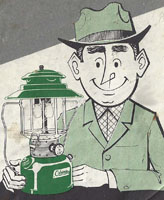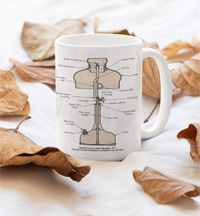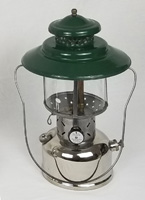Coleman® Fuel Filler Cap Safety
You should always have a modern replacement fuel filler cap on your vintage lantern and stove when using it whenever possible.
Appliances made prior to about 1963 have a 3-piece filler cap with a 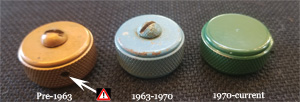 small hole in the side. The hole is there to ventilate pressure while unscrewing the cap. It can spray a stream of fuel in whatever direction it happens to be pointing when depressurizing.
small hole in the side. The hole is there to ventilate pressure while unscrewing the cap. It can spray a stream of fuel in whatever direction it happens to be pointing when depressurizing.
THIS CAP CAN BE EXTREMELY DANGEROUS! Read the news article in the left side bar <--- and watch this YouTube video.
That is why I strongly encourage you to install a replacement filler cap on the appliance before actually using it.
But you can't always do this, because a number of vintage appliances didn't use the standard size filler cap. This includes old Quick Lites, the 242/243 series lanterns and the #500 stove among others. Unfortunately, safer replacement filler caps were never made for those appliances.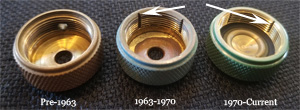
The cap was replaced in 1963 with a 3-piece design with "slots" on the inside intended to redirect pressure down and away from danger. This cap was called the Plamann cap (see patent). In 1970 an even safer cap was introduced, a one-piece unit, and it is the same cap being sold today.
* Special thanks to Alain C. of St. Hyacinthe, QC Canada for pointing out that Coleman Canada made 1-piece filler caps with a side pressure release hole in the early 1960s, and also used a Plamann-style 1-piece cap as early as 1965.
Over time, the rubber gasket in the filler cap can distort, harden and lose its ability to maintain a proper seal. They can be replaced but use caution in selecting the right gasket. You can't just go to the hardware store and buy one, and some on-line retailers will try selling you an O-ring rather than a gasket.
An acceptable fuel filler cap gasket will be impervious to gasoline and kerosene and will fit properly in the cap or cap insert. I recommend the units being sold by www.oldcolemanparts.com.
![]() An O-ring is round stock and is not intended to sit against the flat surfaces of the filler cap, insert or fount. It can roll and/or flex during compression, causing an unwanted release of pressure and/or fuel.
An O-ring is round stock and is not intended to sit against the flat surfaces of the filler cap, insert or fount. It can roll and/or flex during compression, causing an unwanted release of pressure and/or fuel.
"The cap, however, needs to have some type of ventilation capacity in order to equalize the interior pressure of the tank with that of the exterior atmosphere as the cap is removed. If the cap is without a ventilation feature, then removal of the cap will create a sudden pressure surge causing a discharge of fuel in a stream-like manner." -Volz vs Coleman Co., Supreme Court of Arizona Dec 17, 1987
Please take the fuel filler cap seriously. It is the only thing standing between you and complete disaster.


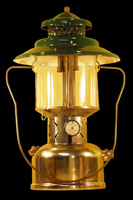
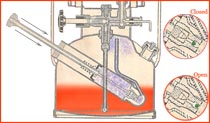 Want to know
Want to know 